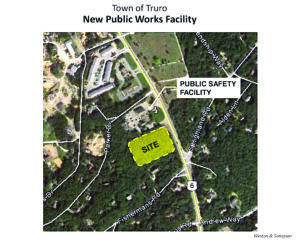PROVINCETOWN — Almost two years ago, departing Dept. of Public Works Director Rich Waldo made a pitch to the select board for a new DPW facility slated to cost $31 million.
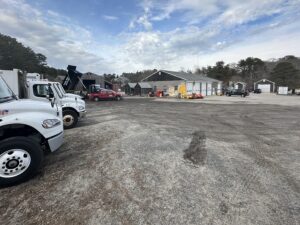
“We really want to start the progressive steps, and maybe it won’t be built in three years, but it will be built in 10 years,” Waldo said of the pair of buildings totaling 45,000 square feet that municipal contracting firm Weston & Sampson had designed to replace the existing DPW building at 24 Race Point Road.
According to current DPW Director Jim Vincent, who took over the job when Waldo became Wellfleet’s town administrator, town staff took home a message that day: such an ambitious project was not feasible.
“We had just presented the $75-million sewer plan, and the fire chief had been talking about a new fire station, and Louise Venden said, ‘Look, we can’t support all these projects right now,’ ” Vincent said. (Select board member Louise Venden retired in 2023.)
“We got a directive that if we wanted to get something built, we had to try a different strategy,” Vincent said.
On Jan. 23, Vincent and Town Manager Alex Morse came back to the select board with a “phased approach” to the 5.6-acre DPW property.
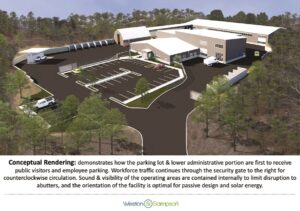
About $400,000 in design work has been added to the town’s capital improvement plan, which will be in an article at spring town meeting, to be followed by a $5-million garage three years from now that could store 12 large trucks.
Two years after that, the 4000-square-foot maintenance barn, a cinderblock structure built in 1950, could be replaced in a second phase of the project.
The plan presented to the select board showed Phase Two costing only $3 million — but Vincent said that the town would need to do more design work after the first phase was finished. “We’re still figuring out what the costs would be and how the numbers would work” for the second half of the project, Vincent said.
Regardless, the total will be much less than $31 million, Vincent said.
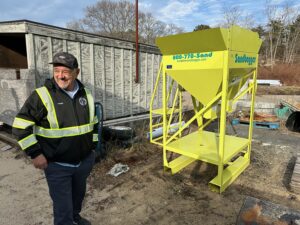
“We’re taking a realistic and practical approach — we’re being frugal with money, and our top priority is getting those vehicles inside and that’s it,” Vincent said. “We want to be good stewards of these resources, and these vehicles are encrusted in salt, sometimes for the whole winter.”
“We need somewhere inside where we can hose the vehicles off in the winter,” said DPW head mechanic Olin Sparks. “Right now, we’re waiting for the weather to be above 40 degrees to wash the sand and salt off outdoors.” In the depths of winter, the town’s garbage trucks and sand-and-salt trucks sometimes go weeks without a wash because temperatures never rise high enough, Sparks said.
Expensive trucks are being totaled after 10 years when they should be lasting at least 15, he said.
“You’re talking about a $300,000 piece of machinery sitting outside, and it’s rusting from the salt, and it winds up having to be ‘surplused,’ or salvaged for parts, because it can’t even be sold to another department,” Sparks said.

Both Sparks and Vincent said it was frustrating to watch machinery decay because of poor storage conditions. Asking for a new garage is fundamentally about conserving a resource, Vincent said.
“We don’t want to say, ‘Oh, it’s cheaper to just get a new vehicle,’ ” Vincent said. “We want to take care of them.”
The DPW property at 24 Race Point Road is large, and there is room to add a 12-vehicle garage without significantly disrupting other operations, Vincent said. Two small storage buildings on the eastern edge of the property would be taken down to make room for the garage.
The maintenance barn would be replaced in Phase Two, but the department is no longer trying to move its main offices from the Veterans Memorial Community Center to the Race Point Road property, Vincent said.
Weston & Sampson’s proposal had attached 9,000 square feet of “office and employee space” to a 7,000-square-foot maintenance bay, creating a structure that would be four times the size of the current cinder-block building. That is no longer the vision, Vincent said.
“In the long run, this will take care of our urgent needs. I just don’t see us going to town meeting and getting the money” for the original design, Vincent said.
Truro’s DPW Battle
Vincent lives and votes in Truro but said he has not studied in detail the $34.4-million DPW proposal that dominated Truro’s fall town meeting warrant and has now been continued to a May town meeting.
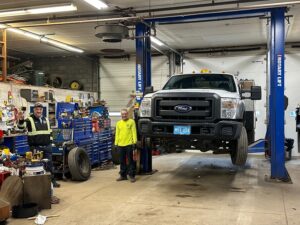
“I haven’t spent a lot of time looking at it,” Vincent said, “because the last thing I want to do when I get home is study another project.”
But Vincent said the intense opposition to the DPW proposal in Truro was a red flag to him.
“When I go to a town meeting and see that much opposition, my first thought is, ‘Did they do the work behind the scenes to resolve all this and listen to all the different opinions?’ ” Vincent said.
“In Provincetown, when we had a lot of opposition to our sewer proposal, we listened, we adjusted, and we moved toward the fire,” he said. “If people are angry, we move toward them — we want to hear what they have to say.”
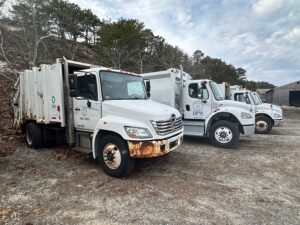
Vincent said that town staff held more than a dozen meetings with individual neighborhoods that resulted in significant changes to the sewer plan.
“We had to find alternatives for people,” Vincent said, “and ultimately we did give people a choice — if they really don’t want to connect to the sewer, they have an option not to.
“To see a town meeting like that one in Truro, where people are screaming and yelling — if you don’t do your homework, you end up with that,” Vincent said. “It’s a waste of time, and it divides people.”
